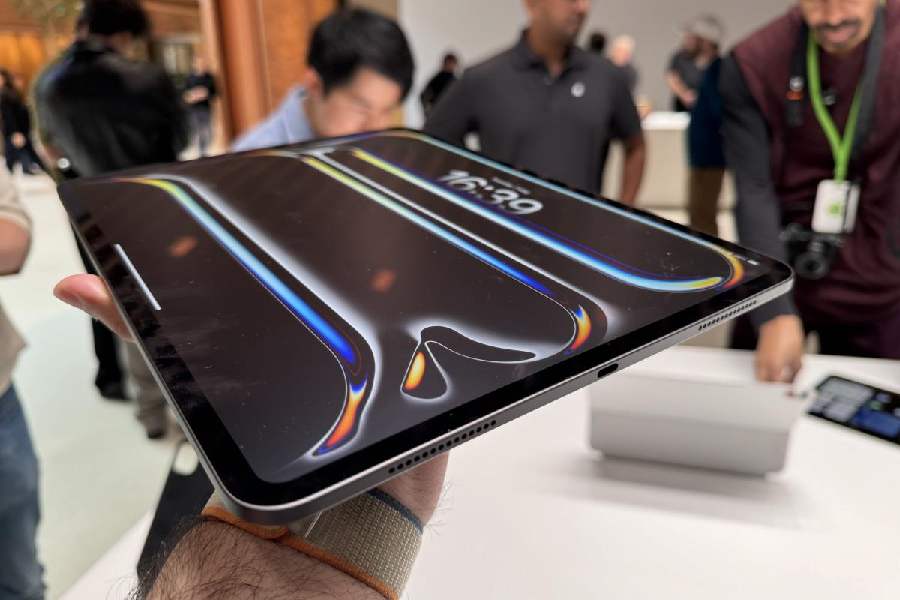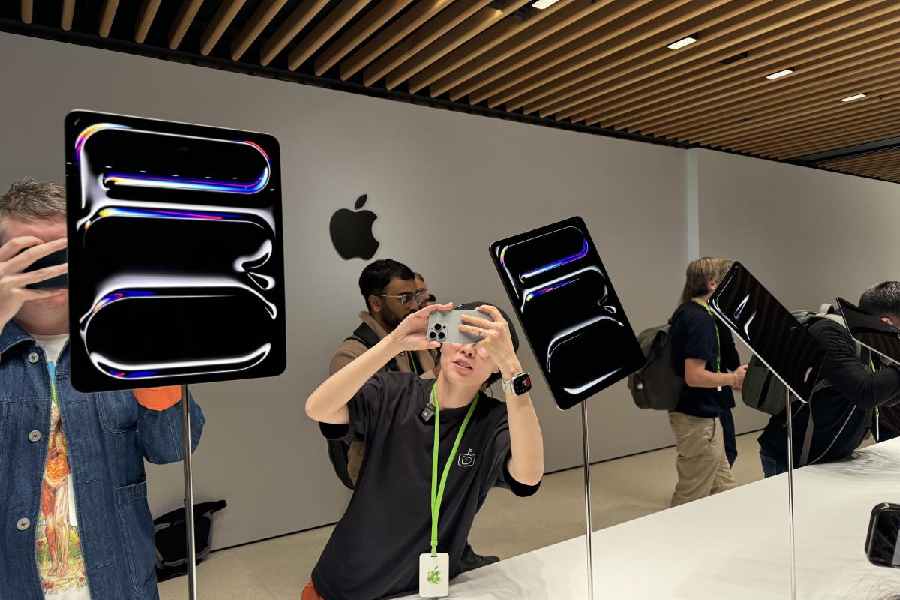Having used the new iPad Pro for a few minutes, one can play around with the famous Rowan Atkinson dialogue to say work — be it film editing, animation, sketching, 3D modelling and whatnot — can now get done in the flashiest of flashes.
Apple chose the latest iPad Pro to receive its top-of-the-line chipset, the M4. Combine this with OLED technology and design refinement to get what may become the device of the year.
What does it mean for power users?
It’s not a head scratcher of a question at all. You can, of course, use the new iPad Pro to read your favourite book at a coffee shop but the iPad Pro is primarily meant for creatives who bounce between powerful applications, dedicating most of the day to cutting-edge software such as Final Cut Pro and Logic Pro.
The M4 chip is not meant to be taken lightly. Built using second-generation three-nanometre technology, M4 has Apple’s fastest Neural Engine ever, capable of up to 38 trillion operations per second, which is faster than the neural processing unit of any AI PC today.
Seeing a photograph ramp up its resolution in a matter of milliseconds or rendering elements in Procreate Dreams at the blink of an eye is nothing short of magic.
It would be fair to say that the iPad has had enough horsepower for a very long time but M4 can handle intense use cases far more efficiently, like a multicam setup in Final Cut Pro or some of the more advanced artistic features in apps like Procreate.
There is AI but look beyond
Apple has long been giving the world AI without saying it’s AI. The insatiable demand for computing power among AI developers is growing at a very fast pace.
The combination of M4’s central processing unit, graphics processor and dedicated AI capabilities — which it calls its neural engine — is a big step forward over its previous chips.The abundance of AI apps since the ChatGPT chatbot arrived around 18 months ago has started a race to put out more powerful processors needed to build so-called large language models — AI systems capable of producing humanlike text and imagery.

The new iPad Pro comes in two sizes: an expansive 13-inch model and a super-portable 11-inch model. Picture: The Telegraph
The M4 chip will eventually make its way to other Apple products, ensuring more advanced AI capabilities. One has to remember that Apple enjoys a big advantage over its rivals. The company has the flexibility to bring many AI features that otherwise would have run in the cloud to the customers’ own devices, ensuring speedier deliveries as well as more privacy. The chip also delivers more memory bandwidth, which is important for data-hungry AI applications.
Of course, the company’s rival Microsoft is planning a Windows event this month that is expected to focus on AI and portability, featuring new Arm-based processors from Qualcomm. It's interesting to see Apple skip the M3 chip entirely and debut the M4 on the iPad Pro, highlighting how important the company considers these new tablets.
OLED is the secret ingredient
Having an OLED display means even those who bought an iPad in 2022 could get tempted to update. And anybody with an older iPad will surely look at upgrading.
However good the old LCD display, it’s another thing to have OLED. The iPad Pro models use a tandem OLED structure that allows the display to reach 1,000 nits of peak full-screen brightness and 1,600 nits for HDR content.
The move to OLED switches up a lot of things. The machine will be capable of much greater contrast, ensuring perfect black levels and greater immersion when watching videos. Creative professionals / artists will no longer need to deal with blooming, for OLED provides per-pixel brightness precision. The reason behind it is improved handling on each pixel’s colour and brightness at a pace of under a millisecond, altering saturation and volumes to better serve what’s on the screen at a moment’s notice.
OLED also means both the 11- and 13-inch machines will offer the same level of display quality. Beginning in 2021, the larger 12.9-inch model featured a Mini LED display that outperformed the smaller iPad Pro.
With OLED displays, Apple has been able to make the new iPad Pros far thinner and lighter than before. The 11-inch model is 5.3mm thick and “weighs less than a pound” while the 13-inch is 5.1mm thick and is "nearly a quarter pound lighter than its predecessor”. A lighter iPad Pro means you can hold the device in your hand longer to get work done.
With iPad Pro with M4, users can perform AI-enabled tasks even faster, like easily isolate a subject from its background in 4K video with just a tap with Scene Removal Mask in Final Cut Pro.

M4 delivers a huge leap in performance, with pro rendering apps like Octane seeing up to 4x faster performance than M2. Picture: The Telegraph
iPadOS also has advanced frameworks like Core ML that make it easy for developers to tap into the Neural Engine to deliver phenomenal AI features locally, including running powerful diffusion and generative AI models, with great performance on device. iPad Pro also supports cloud-based solutions, enabling users to run powerful productivity and creative apps that tap into the power of AI, such as Copilot for Microsoft 365 and Adobe Firefly.
Mathures Paul
